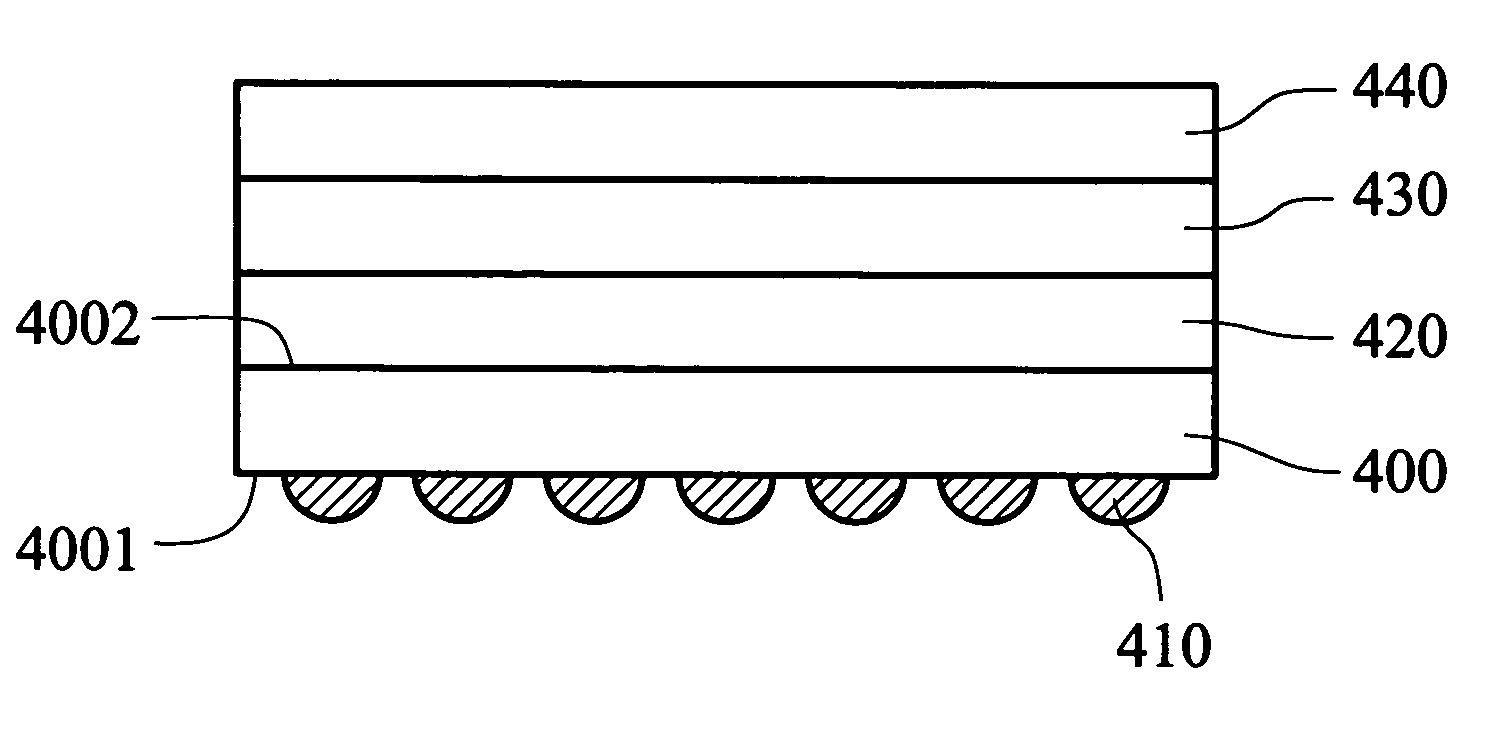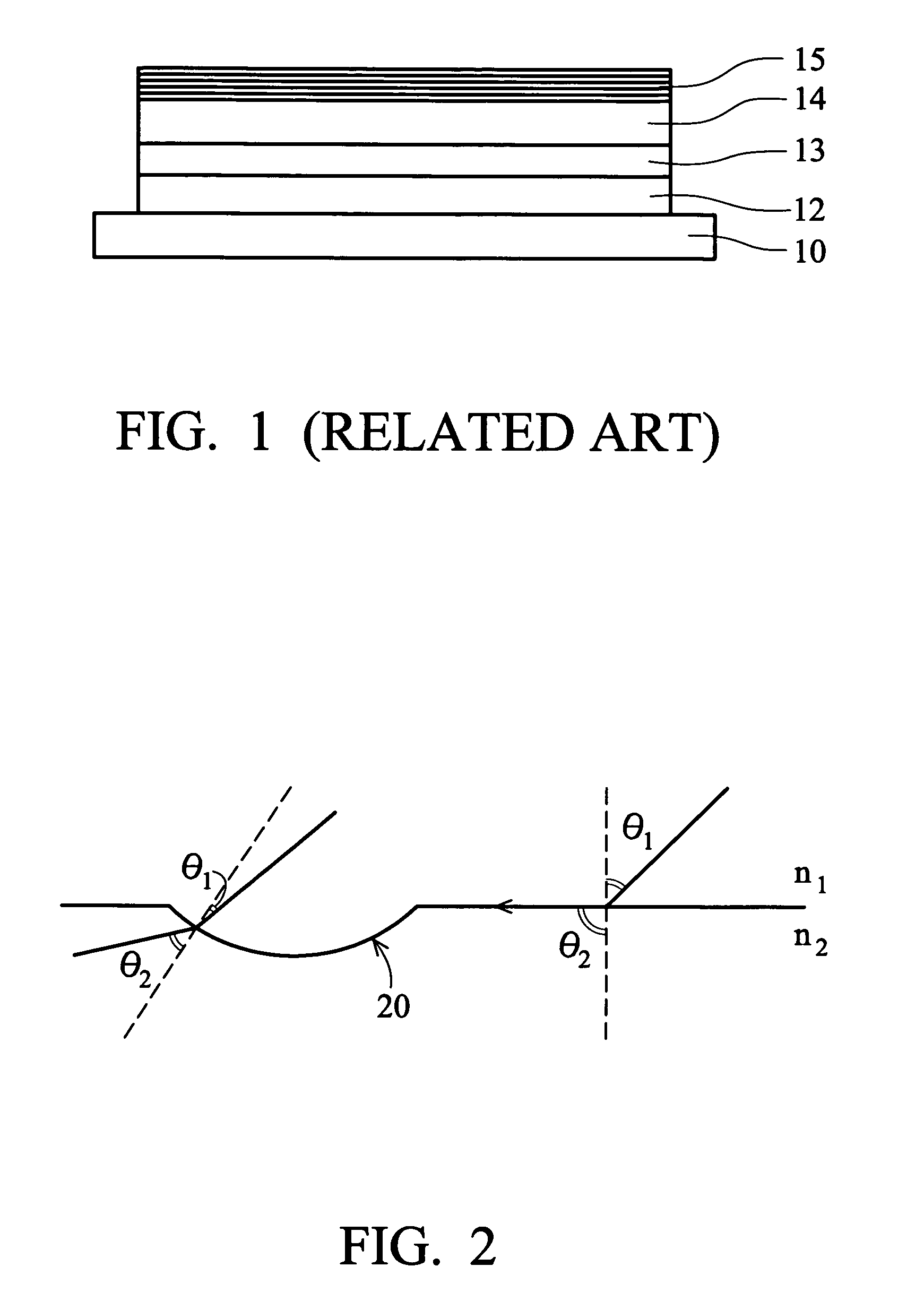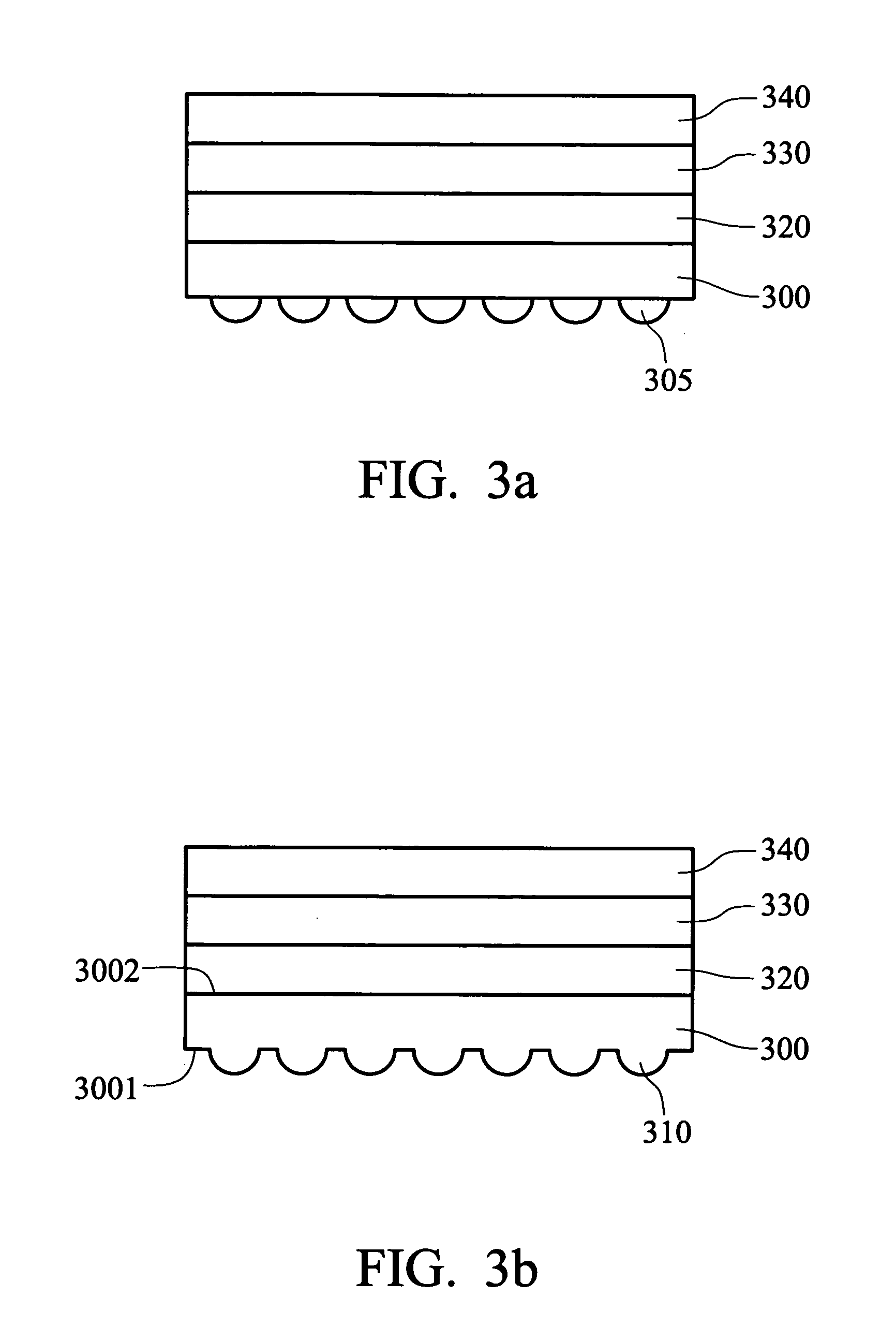Organic light-emitting diode and method of fabricating the same
a light-emitting diode and organic technology, applied in the manufacture of electric discharge tubes/lamps, discharge tubes luminescnet screens, electrode systems, etc., can solve the problems of reducing illumination efficiency, reducing inner light transmittance, and light consumption, so as to reduce total reflection and exterior glare, and improve element performance
- Summary
- Abstract
- Description
- Claims
- Application Information
AI Technical Summary
Benefits of technology
Problems solved by technology
Method used
Image
Examples
first embodiment
[0027]FIGS. 3a˜3b are cross sections of the method of fabricating the OLED according to the first embodiment of the invention. First, referring to FIG. 3a, a substrate 300 is provided. The substrate 300 includes a transparent glass substrate or plastic substrate, wherein the plastic substrate is composed of polyethyleneterephthalate, polyester, polycarbonates, polyimide, arton, polyacrylates, or polystyrene.
[0028]Next, a patterned resist layer 305 with, for example, an arced cross section, is formed on a first plane 3001 of the substrate 300, and other cross-sectional patterns are trapezoidal or rectangular, wherein arced cross section is preferable. Subsequently, the substrate 300 is defined to form a plurality of protrusions 310 on the first plane 3001 thereof with the patterned resist layer 305 used as an etching mask. The patterned resist layer 305 is then removed, as shown in FIG. 3b.
[0029]Detailed characteristics of protrusions, such as size, shape, or function are described ...
second embodiment
[0034]FIG. 4a is a cross sections of the method of fabricating the OLED according to the second embodiment of the invention. First, referring to FIG. 4a, a substrate 400 is provided. The substrate 400 includes a transparent glass substrate or plastic substrate, wherein the plastic substrate is composed of polyethyleneterephthalate, polyester, polycarbonates, polyimide, arton, polyacrylates, or polystyrene.
[0035]Next, a dielectric layer 410 is formed on a first plane 4001 of the substrate 400. The dielectric layer 410 is a transparent material, comprising silicon oxide, silicon nitride, or silicon oxide nitride. The refractive index of the dielectric layer 410 is altered with various substrate materials, about 1.3˜1.9, preferably 1.5. The thickness of the dielectric layer 410 is about 4000˜8000 Å, preferably 6000 Å. The dielectric layer 410 is formed by deposition, being a predetermined region of the subsequently formed protrusions.
[0036]Next, a patterned resist layer (not shown) is ...
PUM
 Login to View More
Login to View More Abstract
Description
Claims
Application Information
 Login to View More
Login to View More - R&D
- Intellectual Property
- Life Sciences
- Materials
- Tech Scout
- Unparalleled Data Quality
- Higher Quality Content
- 60% Fewer Hallucinations
Browse by: Latest US Patents, China's latest patents, Technical Efficacy Thesaurus, Application Domain, Technology Topic, Popular Technical Reports.
© 2025 PatSnap. All rights reserved.Legal|Privacy policy|Modern Slavery Act Transparency Statement|Sitemap|About US| Contact US: help@patsnap.com



